Clincher tires are a popular choice among cyclists and feature a separate tire and inner tube. These tires have a bead that sits under the lip on the clincher rim, providing a secure fit for worry-free rides.
They are available in a variety of sizes and materials, allowing riders to choose the best options for their specific needs and preferences.
Whether you’re preparing for a long-distance race or enjoying your daily commute, clincher tires provide a reliable and convenient solution for every type of cyclist.
Understanding the components and history of clincher tires can help you make informed decisions when selecting the right tire for your bicycle.
Key Takeaways
- Clincher tires offer a convenient and straightforward design with separate tire and inner tube.
- Understanding the components, history, and maintenance of clincher tires is necessary for informed decision-making.
- Selecting the right clincher tire from reputable brands and models enhances safety and overall cycling experience.
Definition of Clincher Tires
What Clincher Tires Are
Clincher tires are the most common type of bike tire and are characterized by their distinct structure consisting of a separate tire and inner tube.
The tire has a bead that hooks under the lip of the clincher rim, creating an air-tight seal. The inner tube sits inside the tire and holds the air pressure. When the air pressure is sufficient, it pushes the bead of the tire against the rim to keep it securely in place.
Differences Between Clincher, Tubular, and Tubeless Tires
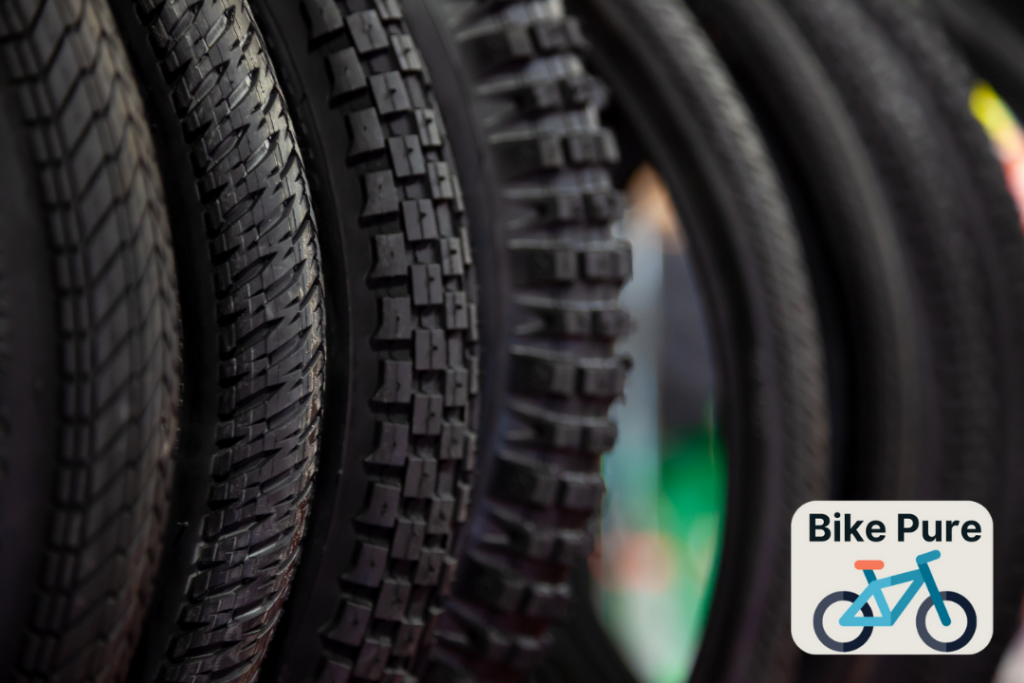
There are a few key differences between clincher, tubular, and tubeless tires:
| Feature | Clincher Tires | Tubular Tires | Tubeless Tires |
| Structure | Separate tire and inner tube | Tube sewn into tire, glued to rim | Tire seals directly to rim, no inner tube |
| Installation | Easier to install and maintain | Requires gluing, harder to install | Can be difficult to install, special rim needed |
| Puncture Repair | Easier to repair, replace tube | Challenging, often requires new tire | Sealant inside tire helps prevent punctures |
| Performance | Versatile, widely used | Preferred for racing, low rolling resistance | Improved traction, can run lower pressures |
| Cost | Generally more affordable | More expensive, specialized | Varies, can be more expensive due to rim/sealant |
The choice between clincher, tubular, and tubeless tires depends on personal preferences, riding style, and specific cycling needs.
Clincher tires are suitable for most cyclists due to their ease of use and maintenance, while tubular and tubeless tires cater more to high-performance cyclists and those seeking specific riding characteristics.
History of Clincher Tires
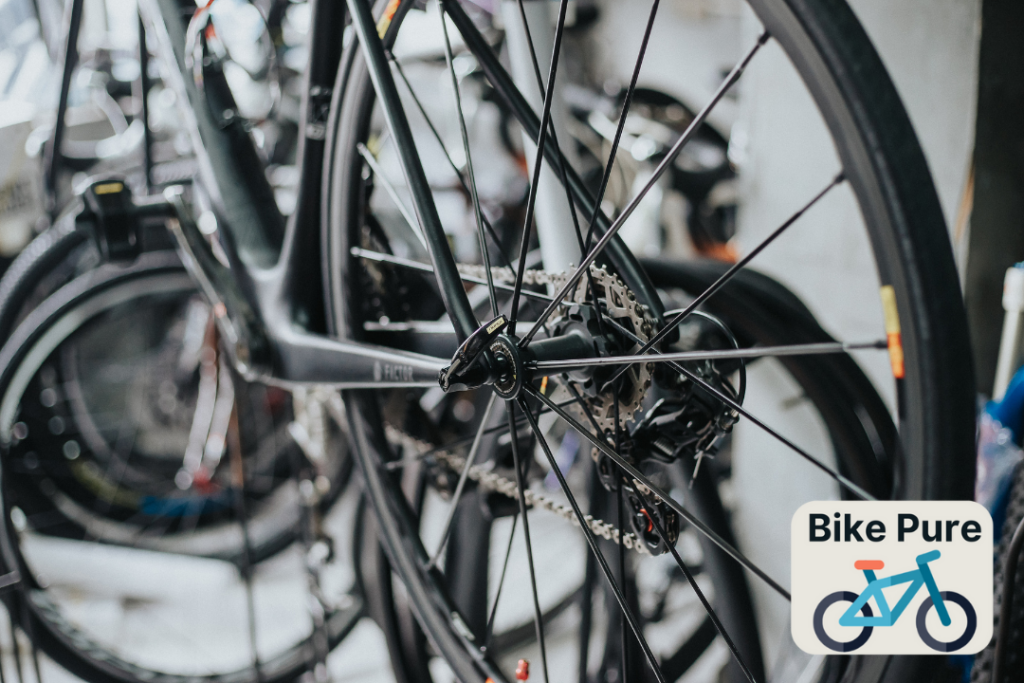
Origins and Early Designs
The history of clincher tires began with the invention of the G. and J. tire by Gormely, which featured a clincher tire design. These early designs were focused on improving traction and durability of the tires.
Clincher tires initially used a separate inner tube to hold air and played an instrumental role in the early development of automobiles. The design emphasized fitting the tire to the rim, making it easier to change and maintain.
The main difference between clincher tires and other types of tires is the way they attach to the rim. A clincher tire features a U-shaped cross-section, allowing it to grip the rim on both sides. This design was initially popular for solid carriage tire and later adapted for automobile tires as well.
Major Innovations and Changes Over the Years
With the advent of the cord tire, major changes took place in the industry. The cord tire’s innovation improved the durability, performance, and comfort of the ride, overshadowing the clincher tire design.
The clincher tire’s design still persisted as a popular choice for cyclists in particular, as it remains a reliable and easy-to-maintain option.
Modern clincher tire designs have also undergone improvements in materials and construction. Incorporating synthetic rubber and advanced fabrics, like Kevlar, has vastly increased the puncture resistance and longevity of clincher tires. Nowadays, cyclists have a variety of options when it comes to tires, including tubular, tubeless, and clincher designs.
In recent years, the development of wider rims has led to increased popularity for broader clincher tires.
These wider designs offer improved cornering grip, lower rolling resistance, and greater overall stability on uneven terrain.
Components of Clincher Tires
Clincher tires are a popular choice for cyclists due to their ease of use and wide range of options. In this section, we will discuss the main components of clincher tires: bead, tire casing, and tread.
Bead
The bead is an important part of a clincher tire, as it plays an important role in securing the tire to the rim. Usually made from steel or Kevlar, the bead is a strong and flexible wire that runs along the edges of the tire. When inflated, it hooks onto the rim, creating an airtight seal.
Beads can be either folded or non-folded. Foldable beads, often made from Kevlar, offer lighter weight and easier storage, while non-folded steel beads are more durable and less expensive.
Tire Casing
The casing provides structure to the tire and is responsible for its overall performance and feel. It is made up of layers of fabric, typically nylon, with rubber coatings on either side. These layers, also known as plies, can vary in density and thread count, affecting the tire’s suppleness and puncture resistance.
The sidewall is an integral part of the tire casing as it connects the bead to the tread, contributing to the ride quality. A thicker sidewall offers increased durability and protection, while a thinner sidewall allows for a more supple and comfortable ride.
Tread
The tread of a clincher tire is necessary for providing traction and grip on various terrains. Tread patterns vary greatly, with different designs tailored to specific types of surfaces and conditions.
Some common types of treads for clincher tires include:
- Slick: Smooth tread with minimal grooves, suitable for road cycling on smooth surfaces.
- Semi-slick: Featuring a smooth center and lightly textured edges, this tread is versatile and offers a balance between speed and grip for mixed conditions.
- Knobby: Tread with larger raised knobs, providing increased traction on loose or uneven terrain, such as gravel or off-road trails.
From the bead that secures the tire to the rim, to the casing that provides structure, and the tread that offers grip on various surfaces, each component plays a significant role in the tire’s performance.
Advantages of Clincher Tires
Clincher tires are a popular choice among cyclists due to their various advantages. These tires consist of a separate tire and inner tube, making them suitable for different types of riders and road bikes. Some of the key benefits include ease of installation, simplicity of puncture repair, and a wide variety of tread patterns and sizes.
Ease of Installation
One of the major advantages of clincher tires is their ease of installation. The bead of the tire hooks onto the rim, allowing the rider to easily mount and secure the tire on the wheel. This design simplifies the process of inflating the tire, as the inner tube sits inside the tire, and the air pressure helps to hold the tire in place on the rim.
Clincher tires are compatible with a wide range of rims, making them a versatile choice for various bike types and wheel sizes.
Simplicity of Puncture Repair
Another benefit of clincher tires is their simplicity when it comes to puncture repair. In case of a flat tire, the rider can quickly remove the tire and inner tube, identify the puncture, and patch it or replace the tube. The design of clincher tires allows for easy access to the inner tube, making the repair process less complicated and time-consuming.
The affordability of clincher tires and tubes means it’s more cost-effective to replace them in case of irreparable damage.
Wide Variety of Tread Patterns and Sizes
Clincher tires also offer a wide variety of tread patterns and sizes, catering to the diverse needs and preferences of riders. From slick and smooth to aggressive and knobby patterns, clincher tires provide a range of options for different road conditions, riding styles, and levels of puncture resistance.
The availability of various tire widths adds to the versatility, as riders can choose the most suitable size for their specific requirements, such as comfort, ride quality, and durability.
Disadvantages of Clincher Tires
Generally Heavier Than Tubular Tires
Clincher tires tend to be heavier than their tubular counterparts. This is because they have a separate tube inside, adding extra weight to the tire system.
The rims of clincher tires also tend to be heavier, as they include a hook or bead for securing the tire to the rim. This extra weight can negatively affect the performance and speed of road bikes, especially during uphill climbs or acceleration.
Possibility of Pinch Flats
Pinch flats, also known as “snake bites,” are a common issue with clincher tires. This type of flat occurs when the tire and inner tube get pinched between the rim and an external object, like a rock or a sharp edge.
When the tire is insufficiently inflated or mounted incorrectly, the risk of pinch flats increases. Tubular tires, on the other hand, are less prone to pinch flats because they don’t have a separate inner tube.
In addition to these main disadvantages, there are other drawbacks to consider when using clincher tires for your bike.
- Mounting: Clincher tires can be more challenging to mount on rims compared to tubular tires. This is because the bead must be properly seated within the rim, which can sometimes be difficult, especially with tighter-fitting tires.
- Cost: Although clincher tires are generally less expensive than tubular tires, the cost of replacing tubes and fixing pinch flats can add up over time. On top of that, high-performance clincher tires and lightweight rims can be quite pricey.
- Inflation: It’s important to maintain the proper tire pressure for clincher tires to prevent pinch flats and ensure optimal performance. This requires regular checking and adjustment, whereas tubular tires tend to hold their pressure better over time.
Despite these disadvantages, clincher tires remain a popular choice for many cyclists due to their versatility, availability, and ease of replacement. Choosing the right type of tire for your bike ultimately depends on your individual preferences and the specific demands of your cycling activities.
Clincher Tire Pressure
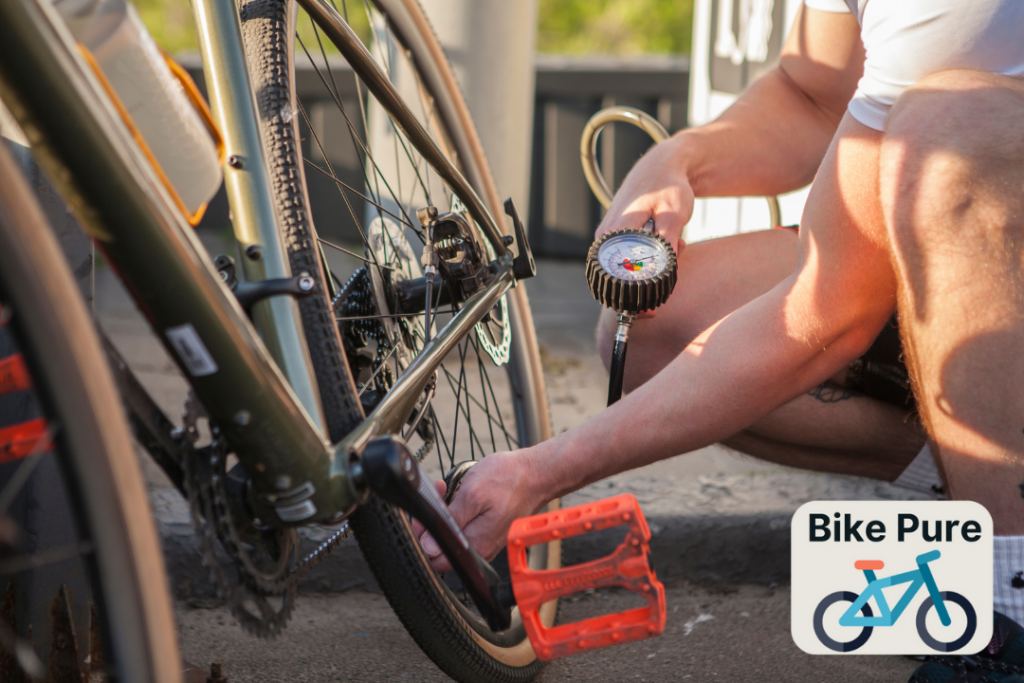
Importance of Maintaining Correct Pressure
Maintaining the correct tire pressure in clincher bike tires is needed for optimal performance and safety. Proper inflation ensures a consistent contact patch with the road, reducing rolling resistance, and improving handling.
It also helps prevent pinch flats, which can result from tubes getting pinched between the tire and rim when tire pressure is too low. Conversely, over-inflation can lead to a harsh ride, reduced traction, and increased risk of puncture.
Impact on Performance and Comfort
Clincher tire pressure directly affects the performance and comfort of a cyclist. The right tire pressure can reduce rolling resistance, which allows the cyclist to maintain higher speed and efficiency.
It’s important to achieve a balance between performance and comfort. A tire inflated to a higher pressure may result in a faster ride, but it can lead to discomfort, as the tire will have less ability to absorb road vibrations, causing a harsher ride.
When considering rider weight, tire width, and road conditions, the optimal pressure range might vary. Nevertheless, a lighter cyclist can generally use lower tire pressure, while a heavier cyclist might want to increase the pressure for better support and reduced rolling resistance.
Determining Optimal Pressure
To determine the optimal pressure for clincher tires, factors like rider weight, tire width, and road conditions need to be taken into account. A good starting point is to follow the manufacturer’s recommended pressure range printed on the tire sidewall. Make small adjustments within that range based on personal preference and road conditions.
A wider tire can generally run at lower pressure, providing a more comfortable ride without losing speed. For example, a 25mm-wide clincher can run effectively at 10-15 PSI lower than a traditional 23mm tire without compromising performance. Many lightweight racing clinchers are 23mm or 25mm wide and have presta valves for easy inflation.
Remember that clincher tires have an airtight seal with their hooked rims, so checking and adjusting tire pressure regularly is necessary to maintain optimal performance. Make it a habit to check the tire pressure before each ride and make adjustments as needed.
Keep in mind that these are general guidelines, and you may need to experiment with different tire pressures until you find the best balance between performance, comfort, and safety.
Maintenance and Care
Tips for Prolonging Tire Life
To maximize the life of your clincher tires, it’s important to maintain proper tire pressure. Underinflated tires increase rolling resistance and expose them to more wear and tear, while overinflated tires compromise ride quality and may lead to premature failure. Invest in a quality tire pressure gauge and check the pressure regularly, ideally before each ride.
Riding style also impacts tire durability. Avoid skidding, abrupt braking, and aggressive cornering as these actions can shorten tire life. Choose the appropriate clincher tire based on your ride style and the terrain you typically encounter. Be aware that more durable tires may come at a higher price point but can save on repair and replacement costs in the long run.
Regular Inspections for Wear and Damage
Examining your tires for irregular wear patterns, cuts, and punctures helps you identify potential issues before they become serious. Check the tread for signs of excessive wear, such as bald spots or flaking rubber. Inspect the sidewalls for cuts or bulges, which can be signs of internal damage.
Proper Cleaning Techniques
Regular cleaning helps maintain ride quality and prolongs the life of your clincher tires. Remove debris and dirt from the tire tread using a brush with stiff bristles. For a deeper clean, mix warm water and mild soap in a bucket, then scrub the tires gently using a soft sponge or cloth. Rinse the tires with clean water and dry them thoroughly before reassembling your bike.
Best Practices for Storage
Proper storage conditions can help maintain the structural integrity of your clincher tires. Store your bike and tires in a cool, dry place, away from direct sunlight and extreme temperatures. Consider removing the tires from the bike if it will not be ridden for an extended period of time. This may reduce the risk of flat spots or other damage related to extended periods of inactivity.
By following these guidelines for maintenance and care, you can keep your clincher tires in optimal condition, ensuring a comfortable, durable, and safe ride.
Choosing the Right Clincher Tire
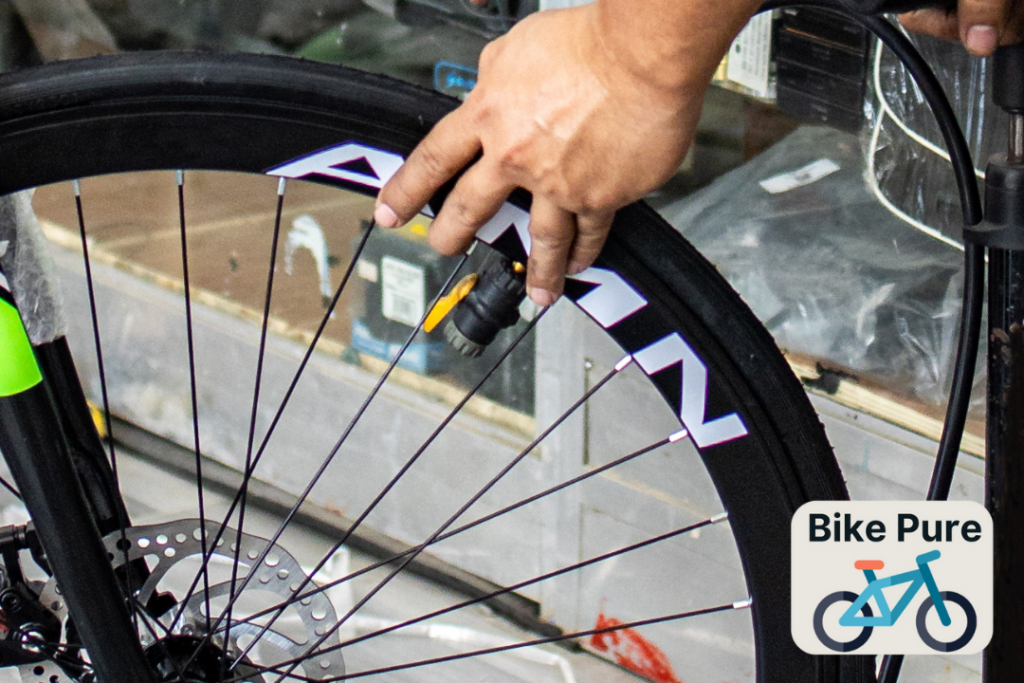
Terrain Consideration
When selecting clincher tires for your bike, the terrain you’ll be riding on plays an important role in your decision. For mountain bikes, you’ll want to choose a tire with more aggressive tread patterns and wider dimensions to provide better grip on rough terrain.
On the other hand, road bikes require tires with a smoother and thinner design, offering low rolling resistance for faster speeds on paved surfaces.
For gravel and mixed-surface riding, consider tires with a balance between grip and rolling resistance to handle varying conditions.
Weather Conditions
The specific conditions you’ll be riding in also impact your clincher tire choice. Wet weather often calls for tires with deeper grooves and siping to channel water away from the contact patch, improving traction.
Dry conditions can accommodate a wider range of tire options, but generally, a moderately grooved design will provide sufficient grip. Always ensure the tire you select is capable of handling the weather conditions you frequently encounter during your rides.
Rider’s Weight and Style
Your weight and riding style also influence the ideal clincher tire for you. Heavier riders may opt for slightly wider tires to better distribute their weight, reducing the chance of punctures and providing added stability. Your riding style also plays a role; for example, a more aggressive rider might prefer a tire with a sturdier casing and reinforced sidewalls for durability and cornering stability.
Keep in mind that personal preference is necessary when selecting clincher tires since every rider is unique and may have specific requirements based on their riding style, terrain, and conditions.
Safety Tips
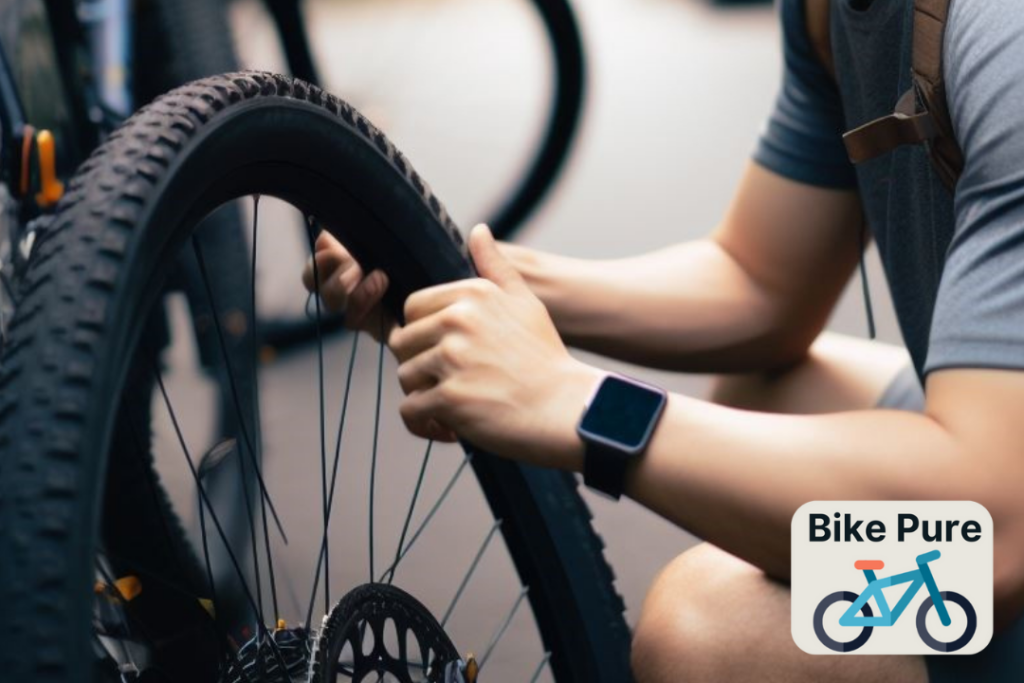
Regularly Checking Tires for Signs of Wear or Damage
Regular maintenance is an integral part in preserving the durability and performance of clincher tires. One key aspect of maintenance is checking the tires for signs of wear or damage on a regular basis. This includes looking for cuts, punctures, and abrasions on the tire’s surface, as well as examining the sidewalls for bulges or cracks.
Keep an eye out for signs of excessive wear on the tread, as it may indicate the need for a tire replacement. Also, be sure to inspect the tire pressure and ensure it is within the recommended range, which can be found on the tire’s sidewall.
Risks of Riding on Worn-Out or Damaged Tires
Ignoring the signs of wear or damage on clincher tires can significantly compromise the safety and performance of the bicycle. One of the common problems a rider will encounter is flat tires due to the use of worn-out tires, which could lead to loss of control or accidents. Damaged tires are also more prone to sudden blowouts, causing dangerous situations while cycling. It is important to prioritize safety by addressing these issues promptly.
Importance of Timely Replacement
Replacing clincher tires when they show signs of wear or damage is important for maintaining safe bicycle handling and preventing accidents. The lifespan of a tire may vary depending on factors such as rider’s weight, riding conditions, and tire quality. Some general guidelines to consider are replacing tires when the tread becomes significantly worn or if the sidewalls show signs of damage.
Following these safety tips will help to ensure that the clincher tires remain in good condition, providing the best possible grip and performance for a safe, enjoyable, and efficient ride.
Popular Brands and Models
Overview of Leading Brands in The Market
In the world of clincher tires, several brands have gained a reputation for quality, performance, and durability. Among these top contenders are Continental, Vittoria, and Michelin. These companies invest in research and development to create reliable tires for various cycling conditions and preferences.
Continental, a German brand, is known for its durable and high-performance tires, suitable for all types of terrain. Vittoria, an Italian company, offers a wide range of tires, including the popular Vittoria Rubino Pro, which provides excellent grip and puncture resistance. Michelin, a French company, is renowned for manufacturing tires with a focus on rolling efficiency, grip, and durability.
Unique Selling Points of Popular Models
When it comes to clincher tires, different models have specific features that set them apart. Here are some unique selling points for a few popular models:
- Continental Grand Prix 5000: This tire stands out for its patented BlackChili compound, which increases grip, reduces rolling resistance, and enhances durability. It features a Vectran Breaker layer, offering impressive puncture protection.
- Vittoria Rubino Pro: The Vittoria Rubino Pro boasts a Graphene 2.0 compound for improved grip, as well as a nylon casing for added durability and puncture resistance. It is a budget-friendly option that maintains a balance between performance and cost.
- Michelin Power Competition: This tire is designed for road racing, offering low rolling resistance and excellent grip, thanks to its Race Compound. It also features an Aramid Protek belt for enhanced puncture protection.
When selecting clincher tires, keep in mind not only the brand but also the unique features offered by various models. Factors like cost, performance, and durability should be taken into account to find the best fit for one’s biking needs and preferences.
Frequently Asked Questions
How to properly install a clincher tire?
To install a clincher tire, follow these steps:
- Inspect the rim for any damage or debris, and ensure the rim tape is in good condition.
- Partially inflate the inner tube to give it some shape, making it easier to work with.
- Place the tire on the rim, starting at a point opposite the valve hole.
- Slide the inner tube valve through the valve hole on the rim and position the inner tube inside the tire.
- Work your way around the rim, carefully pushing the tire bead onto the rim. Use a tire lever if necessary, but be cautious not to pinch the inner tube.
- Once both beads are securely seated on the rim, inflate the tire to the manufacturer’s recommended pressure.
How to choose the right size of clincher tires?
Choosing the right size of clincher tires depends on your bike’s wheel size, rim width, and your intended riding conditions. Check your bike’s specifications or consult the manufacturer’s recommendations to find the correct tire and rim combination.
In general, wider tires offer more comfort, grip, and puncture resistance but may be less aerodynamic than narrower tires, making your choice a matter of personal preference and riding style.
How to maintain and increase the lifespan of clincher tires?
To maintain and increase the lifespan of clincher tires:
- Regularly inspect your tires for wear, cuts, or damage.
- Maintain proper tire pressure, as indicated by the tire manufacturer.
- Rotate your tires periodically, switching the front and rear tires to ensure even wear.
- Avoid skidding or locking up the rear wheel while braking, as this can cause excessive wear.
- Clean your tires and rims regularly to remove debris and improve performance.
- Store your bike in a cool, dry place, away from direct sunlight, to prevent premature aging of the rubber.
What are the top brands for clincher road bike tires?
Some of the top brands for clincher road bike tires include Continental, Michelin, Vittoria, Schwalbe, and Pirelli. Each brand offers a wide selection of tire models, catering to different performance needs and price ranges.
It’s necessary to research and compare the specific tire models based on your riding style, conditions, and budget to find the best clincher tire for your needs.













